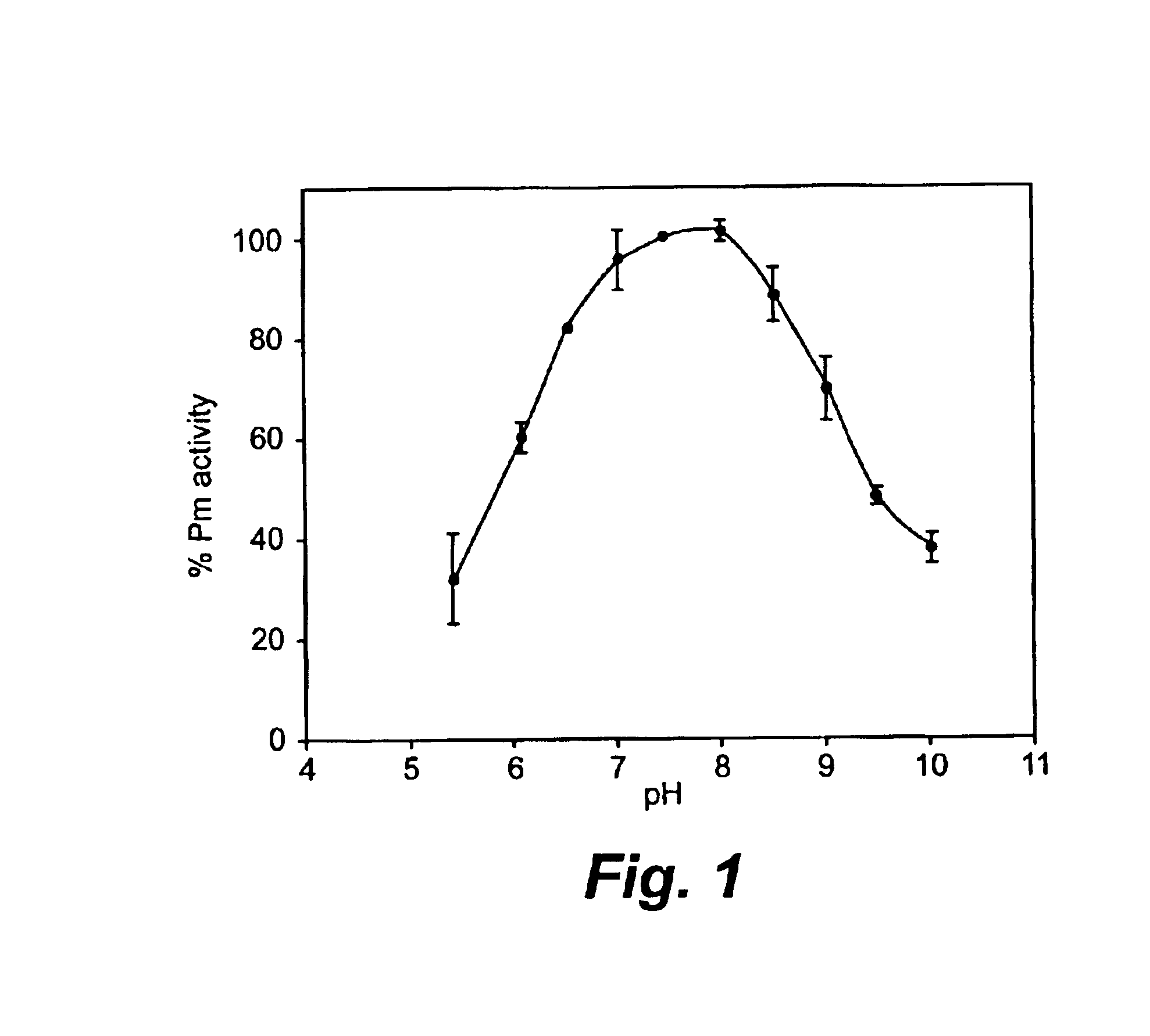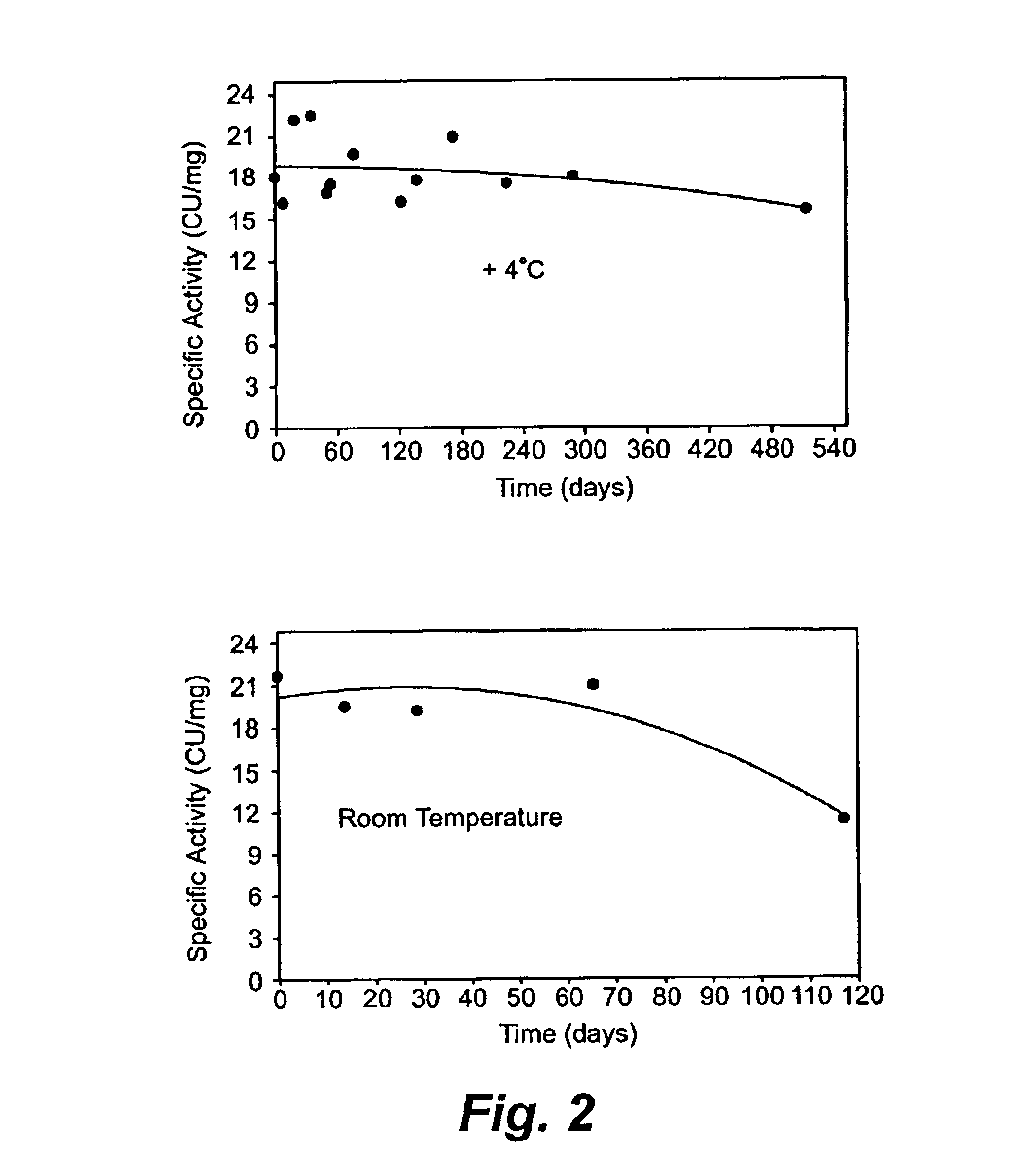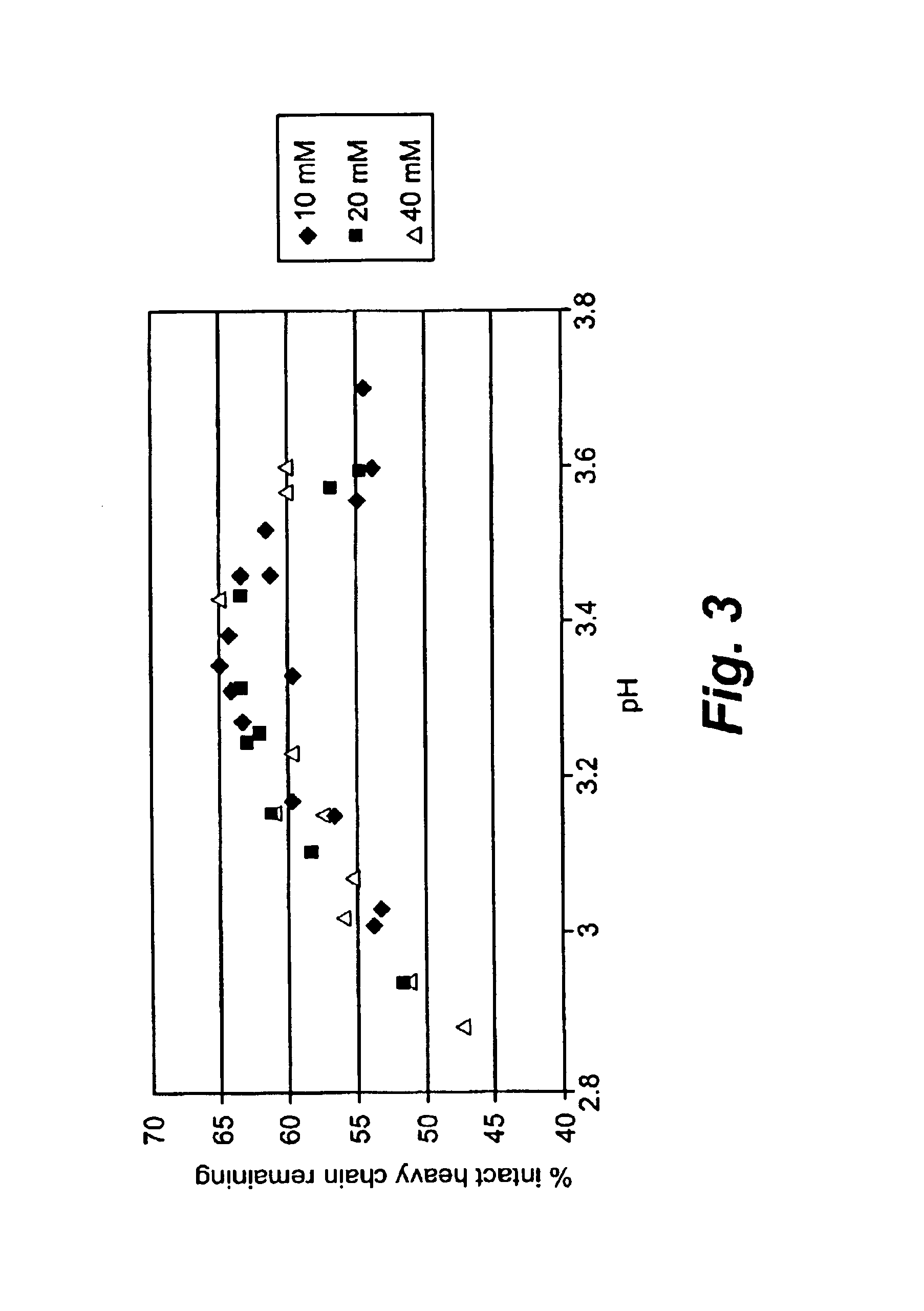Method of thrombolysis by local delivery of reversibly inactivated acidified plasmin
- Summary
- Abstract
- Description
- Claims
- Application Information
AI Technical Summary
Benefits of technology
Problems solved by technology
Method used
Image
Examples
example 1
Sources of Proteins Investigated
[0121]Plasminogen was purified from Cohn Fraction II+III paste by affinity chromatography on Lys-SEPHAROSE as described by Deutsch & Mertz (1970). Thus, 200 g of the paste was resuspended in 2 liter of 0.15M sodium citrate buffer, pH 7.8. The suspension was incubated overnight at 37° C., centrifuged at 14,000 rpm, filtered through fiberglass and mixed with 500 ml of Lys-SEPHAROSE 4B (Pharmacia). Binding of plasminogen was at room temperature for 2 hours. The Lys-SEPHAROSE was then transferred onto a 2-liter glass filter, and washed several times with 0.15M sodium citrate containing 0.3M NaCl until the absorbance at 280 nm dropped below 0.05. Bound plasminogen was eluted with three 200-ml portions of 0.2M ε-aminocaproic acid. Eluted plasminogen was precipitated with 0.4 g solid ammonium sulfate / ml of plasminogen solution. The precipitate of crude (80-85% pure) plasminogen was stored at 4° C.
[0122]Low-molecular weight urokinase (LMW-urokinase) (Abbokina...
example 2
Purification of Active Plasmin
(i) Activation of Plasminogen to Plasmin Using Urokinase-SEPHAROSE.
[0124]Plasminogen was cleaved to plasmin yielding plasmin without contamination of the final preparation by using an immobilized plasminogen activator. Urokinase cleaves plasminogen directly. Plasminogen activation by urokinase does not depend on the presence of fibrin as in the case of tPA, and urokinase is a human protein. These factors, and its relative low cost, make urokinase the preferred activator, although this does not preclude the use of tPA, streptokinase or any other cleavage means yielding an active plasmin capable of fibrin degradation. The ammonium sulfate precipitate of crude plasminogen was centrifuged at 14,000 rpm and resuspended in a minimal volume using 40 mM Tris, containing 10 mM lysine, 80 mM NaCl at pH 9.0 to achieve the final protein concentration of 10-15 mg / ml. The plasminogen solution was dialyzed overnight against the same buffer to remove ammonium sulfate. ...
example 3
pH-Dependent Stability of Plasmin
[0133]Plasmin exhibits a bell-shaped pH dependence of its catalytic activity. As shown in FIG. 1, plasmin has maximum enzyme activity at pH 7.5-8.0, and its activity rapidly decreases at either more alkaline or more acidic pH values. Plasmin is most inactive, and reversibly so, below pH 4.0, due to the protonation of histidine in the catalytic center, as shown by Robbins & Summaria (1976) and Castellino & Powell (1981).
[0134]Plasmin is very unstable at a physiological pH. Both the heavy chain and light chains of plasmin degraded dramatically within hours at room temperature and 4° C. Plasmin was formulated at 1 mg / ml in 0.04M sodium phosphate, pH 7.4, and incubated at 22° C. or 4° C. for 6 hours. During the incubation, the plasmin integrity was analyzed every two hours by reducing SDS-PAGE analysis. Both the heavy chain and light chain degraded rapidly within hours at 22° C. and 4° C. as shown in Table 1.
[0135]
TABLE 1The rapid degradation of plasmin ...
PUM
| Property | Measurement | Unit |
|---|---|---|
| Concentration | aaaaa | aaaaa |
| Concentration | aaaaa | aaaaa |
| Concentration | aaaaa | aaaaa |
Abstract
Description
Claims
Application Information
 Login to View More
Login to View More - R&D
- Intellectual Property
- Life Sciences
- Materials
- Tech Scout
- Unparalleled Data Quality
- Higher Quality Content
- 60% Fewer Hallucinations
Browse by: Latest US Patents, China's latest patents, Technical Efficacy Thesaurus, Application Domain, Technology Topic, Popular Technical Reports.
© 2025 PatSnap. All rights reserved.Legal|Privacy policy|Modern Slavery Act Transparency Statement|Sitemap|About US| Contact US: help@patsnap.com



